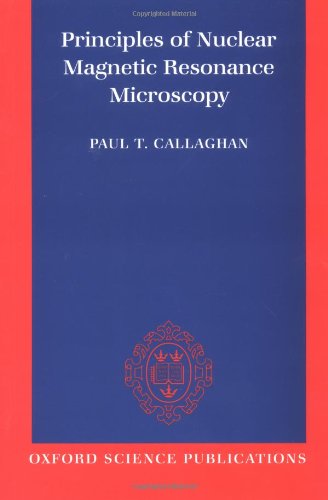Principles of Nuclear Magnetic Resonance Microscopy book download
Par novak mary le vendredi, juillet 1 2016, 06:21 - Lien permanent
Principles of Nuclear Magnetic Resonance Microscopy by Paul Callaghan


Principles of Nuclear Magnetic Resonance Microscopy pdf free
Principles of Nuclear Magnetic Resonance Microscopy Paul Callaghan ebook
Format: djvu
ISBN: 0198539444, 9780198539445
Page: 512
Publisher: Oxford University Press, USA
Principles of Nuclear Magnetic Resonance Microscopy. Optical-atomic magnetometers are based on a different principle – one that, curiously, is something like NMR in reverse, except that optical-atomic magnetometers measure whole atoms, not just nuclei. Prior to the development of three-dimensional magnetic resonance imaging (MRI), the tracking of immune cell migration was limited to microscopic analyses or tissue biopsies. Principles of Nuclear Magnetic Resonance Microscopy: Paul. And best-illustrated book on cardiac MRI Designed and edited. Download Principles of Nuclear Magnetic Resonance Microscopy - Free chm, pdf ebooks rapidshare download, ebook torrents bittorrent download. Cardiovascular magnetic resonance - Google Books. Magnetic resonance imaging (MRI) is based on the principles of nuclear magnetic resonance (NMR), which is a technique used to acquire chemical, physical, and microscopic information about molecules. According to MR principles, the lowest detection limit is 1018 spins per voxel 24. It has helped revolutionise “The NMR operates under the same principles as magnetic resonance imaging (MRI, which many patients experience as part of modern medical procedures) but is powered by a superconductor and has a magnetic field 400,000 times stronger than the Earth's magnetic field. �Nuclear magnetic resonance is a key technology for determining the structure of molecules and for visualising the anatomy of living tissue and microscopic structure. In addition, the similarity between 19F and 1H ( regarding their NMR properties) is a prerequisite for a meaningful overlay between the anatomical 1H MRI with the 19F MRI of labeled cells.